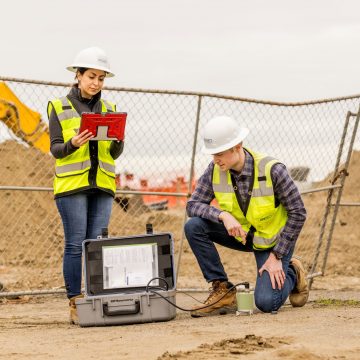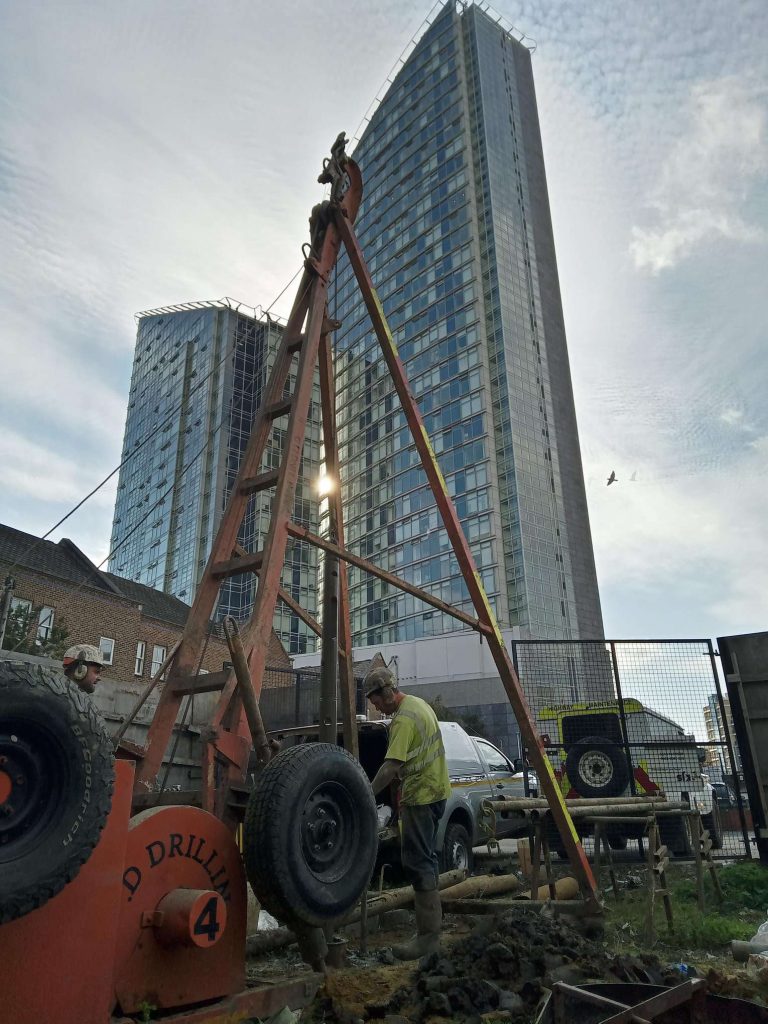The Advancement of Civil Consulting Engineers in the Modern Generation
The Advancement of Civil Consulting Engineers in the Modern Generation
Blog Article
An In-Depth Appearance at the Extent of Technique for Geotechnical Engineers and Their Influence On Job Feasibility and Danger Mitigation
The scope of practice for geotechnical designers includes a variety of essential obligations that directly affect project feasibility and danger administration. What specific approaches do geotechnical designers use to navigate these complexities successfully?
Duties and Responsibilities of Geotechnical Engineers
Geotechnical engineers play an important role in the foundation of building and construction tasks, making certain that frameworks are improved strong ground. Their obligations include a series of activities vital for assessing dirt and rock residential or commercial properties, which directly influence task usefulness and safety and security. Originally, geotechnical designers conduct site examinations to gather important data concerning subsurface problems. This includes exploration boreholes, sampling soil and rock, and performing in-situ examinations to identify material features.

Collaboration is also a key aspect of their role; they function very closely with civil designers, engineers, and environmental professionals to guarantee that geotechnical considerations are incorporated into overall job planning. Inevitably, the knowledge of geotechnical engineers is essential in advertising the safety, sustainability, and viability of construction endeavors.
Secret Areas of Geotechnical Analysis
Soil samples and geological studies are fundamental elements in the crucial areas of geotechnical analysis. These tasks provide important information relating to the physical and chemical residential or commercial properties of the subsurface materials, enabling designers to analyze website conditions properly. The analysis normally encompasses soil classification, compaction, shear toughness, and permeability, all of which are crucial for comprehending the behavior of dirts under numerous loading conditions.
An additional substantial location of focus is slope security analysis, which examines the threat of landslides or soil erosion. This involves analyzing the geometry of slopes, dirt types, and groundwater conditions. Site characterization is additionally vital, as it involves a complete examination of the website's history, including previous construction, contamination, and natural threats.
Furthermore, groundwater analysis plays an essential duty in geotechnical analysis, affecting both the design and building stages. Comprehending the groundwater table, circulation instructions, and potential fluctuations is necessary for effective foundation style and stormwater management.
Together, these crucial locations of geotechnical evaluation form a thorough framework that notifies decision-making procedures, ensuring risk-free and lasting engineering methods while minimizing possible risks related to subsurface conditions.
Influence On Job Usefulness
The feasibility of a construction project pivots dramatically on the understandings gained from geotechnical examinations. These examinations provide important information pertaining to dirt homes, groundwater conditions, and subsurface qualities, which are crucial for determining the suitability of a website for building and construction. By analyzing variables such as dirt bearing ability, negotiation capacity, and slope stability, geotechnical designers play a critical role in evaluating whether a project can continue as prepared or if adjustments are essential.
Furthermore, the results of geotechnical research studies straight affect job layout and building and construction methods. Accurate geotechnical information enables for informed decision-making, making sure that structural layouts fit site-specific conditions and abide by regulatory demands. This process helps in maximizing resource appropriation, thus lowering unforeseen delays and cost overruns.
Furthermore, an extensive geotechnical evaluation improves the total viability of a job by recognizing potential difficulties early in the preparation phase. By resolving these difficulties proactively, stakeholders can boost the project's probability of success, ensuring that it satisfies both monetary and practical purposes. In summary, the payments of geotechnical engineers are essential to developing task expediency, thereby laying the groundwork for efficient task implementation.
Danger Reduction Strategies
While building jobs naturally include various unpredictabilities, implementing effective risk mitigation techniques can substantially decrease potential issues arising from geotechnical elements. Geotechnical engineers play an essential role in determining, evaluating, and dealing with threats connected with subsurface conditions, guaranteeing that projects proceed efficiently and continue to be within budget.
One primary method entails thorough website examinations, which consist of soil tasting, in-situ testing, and research laboratory evaluation. These analyses offer vital data on soil actions, toughness, and structure, enabling engineers to design structures and earthworks that are both reliable and risk-free. Utilizing innovative modeling strategies, such as finite component evaluation, enables engineers to forecast how soil and architectural interactions might advance under various loading conditions.
An additional reliable reduction strategy is the implementation of appropriate layout alterations, such as making use of support great post to read techniques or adopting alternative building techniques, which can improve security and minimize vulnerability to geotechnical concerns. In addition, constant tracking of site conditions throughout construction can promote prompt treatments, thus minimizing the likelihood of unanticipated issues.
Study and Real-World Applications
Instance research studies supply beneficial insights right into the practical applications of geotechnical design principles and highlight the efficiency of danger mitigation approaches in real-world circumstances. One noteworthy instance is the construction of the Centuries Dome in London, where innovative ground treatment techniques were carried out to attend to tough soil conditions. By using deep concrete blending and dirt stabilization methods, engineers successfully produced a stable foundation that minimized prospective negotiation threats, ensuring the project's usefulness.
An additional case is the stablizing of the hillside for the brand-new highway in California, where comprehensive incline evaluation and monitoring were used. Geotechnical designers made use of keeping walls and drainage click this systems to take care of groundwater, dramatically minimizing the risk of landslides. This proactive method not only preserved the honesty of the highway however additionally enhanced public safety and security.
Additionally, the growth of a significant airport terminal showed the relevance of detailed website examinations. geotech engineer. Geotechnical engineers determined problematic soil layers and advised particular structure layouts, resulting in an effective task completion with reduced delays. These study emphasize the vital duty that geotechnical engineers play in examining dangers and executing effective remedies, consequently improving job expediency and overall success
Verdict

By examining aspects such as soil bearing capacity, settlement possibility, and incline security, geotechnical designers play a crucial function in reviewing whether a project can continue as intended or if modifications are needed.
In recap, the payments of geotechnical designers are integral to developing project expediency, thereby laying the foundation for effective job execution.
Geotechnical engineers identified bothersome dirt layers her latest blog and advised particular foundation layouts, leading to a successful project conclusion with decreased delays. geotech engineer. These case researches underscore the important function that geotechnical designers play in assessing dangers and executing effective remedies, thereby boosting task expediency and general success
Via reliable danger reduction strategies and the application of innovative modeling techniques, geotechnical designers improve task results and decrease dangers associated to dirt and groundwater problems.
Report this page